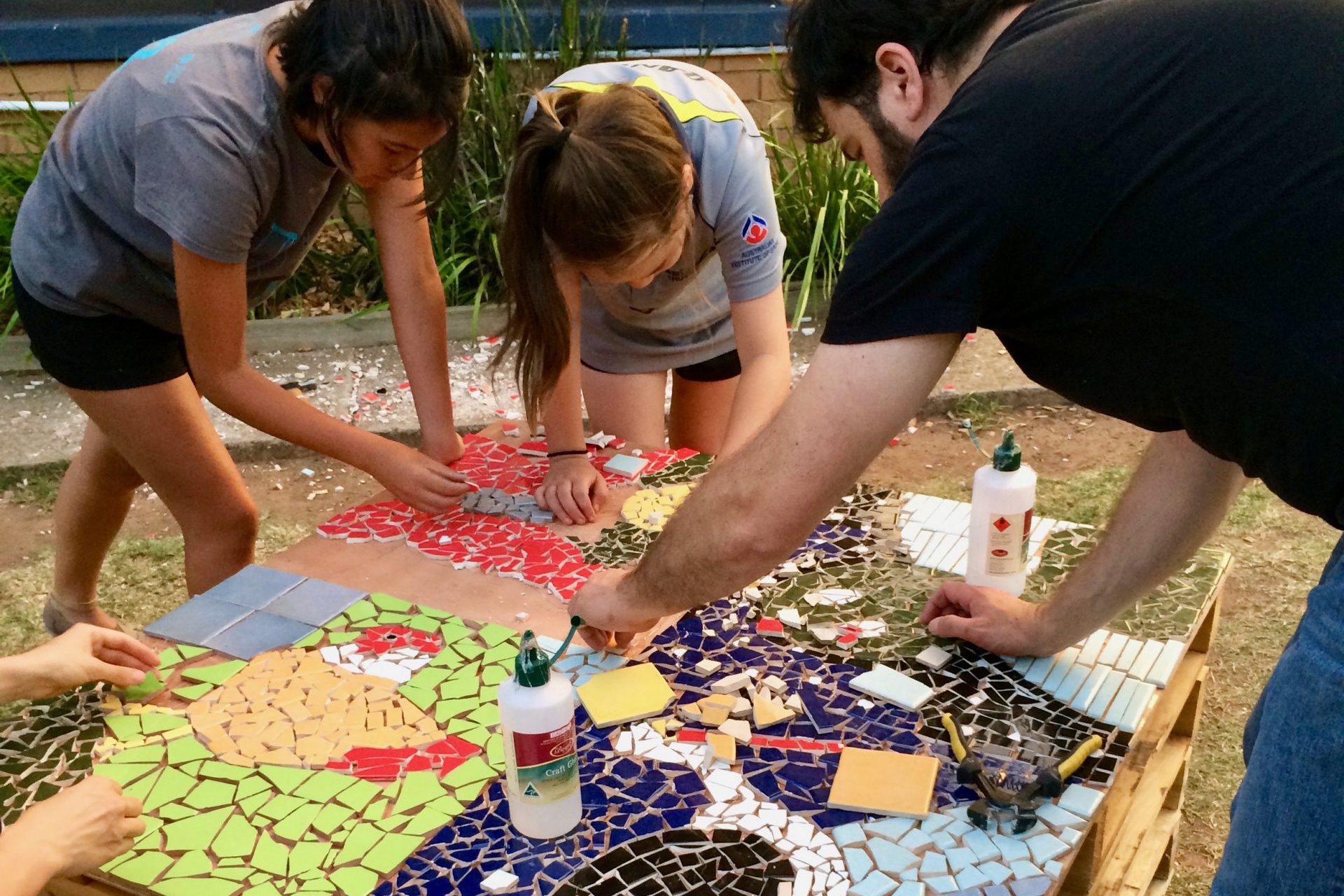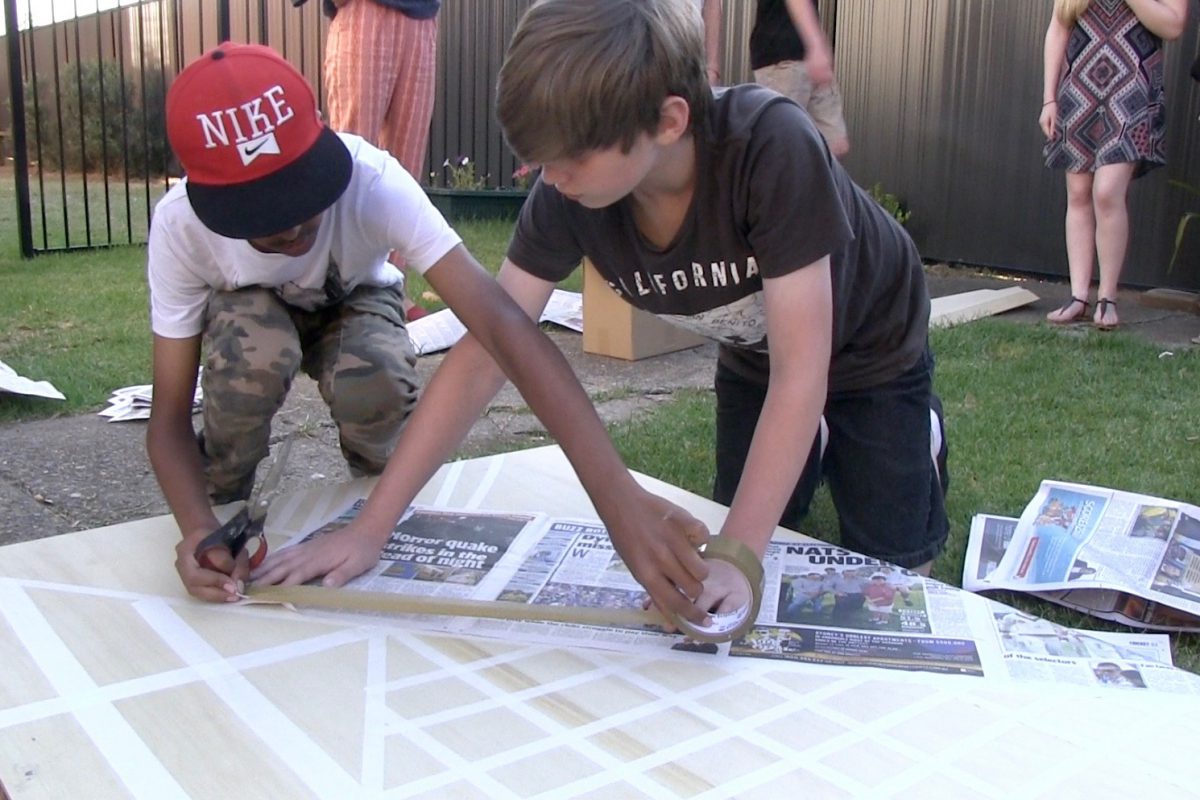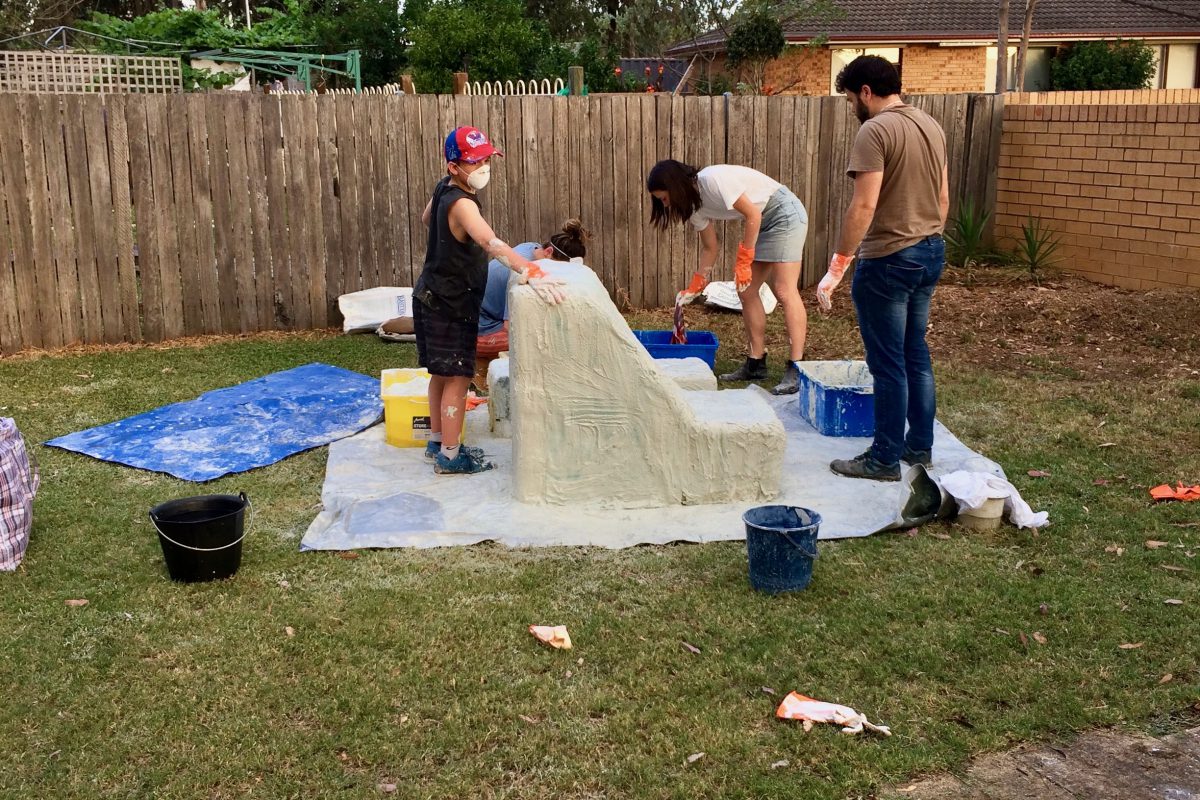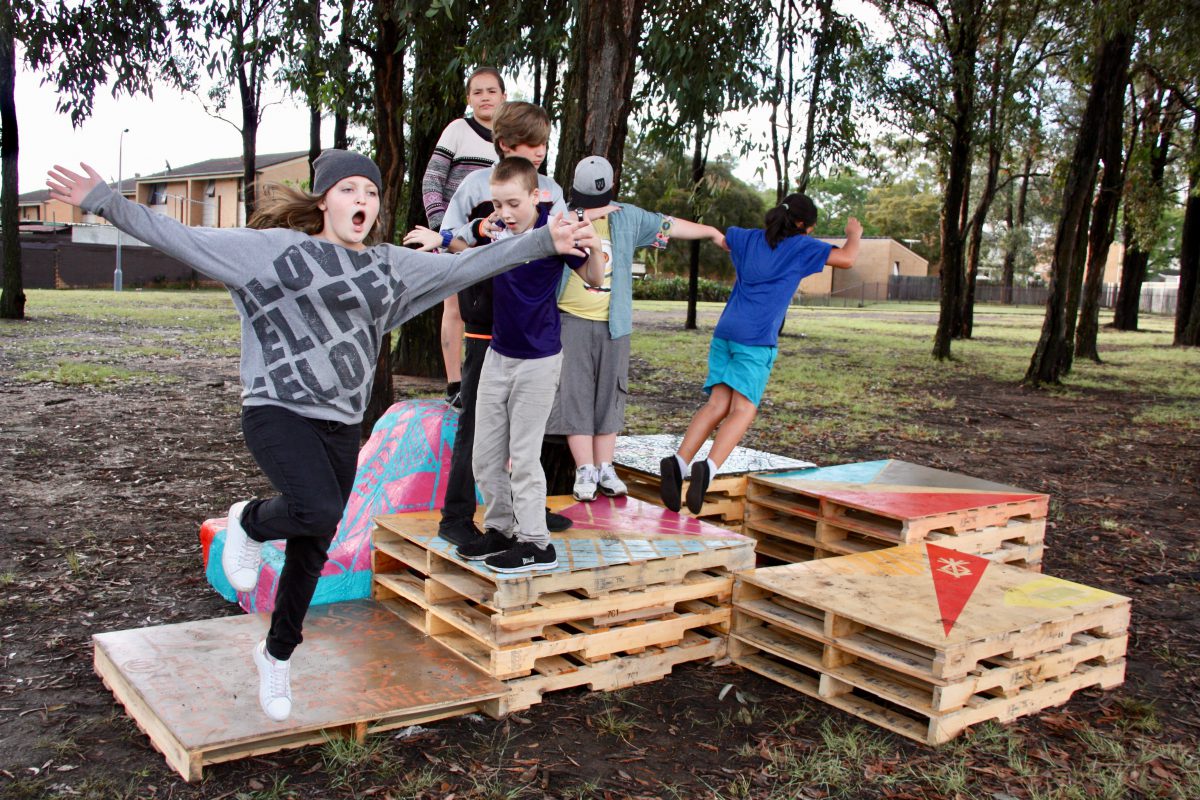
Keep up with our latest news and projects!

During my research, teenagers in the outer suburbs of Sydney told me they want to be involved in decisions about their neighbourhood in ways that are creative, practical, fun, and sociable. The Bidwill Chill Space program experimented with answering that call. I worked with young people from Mt Druitt Learning Ground to design and build a place to ‘chill’ with friends in Bidwill Reserve, a need which had been identified by Blacktown City Council through consultation at the adjacent school. A four-minute snapshot is at vimeo.com.
Design-build placemaking is not only about producing a better design through the use of kids’ knowledge, or the democratic ideal of giving kids a say in decisions that affect them.
It also has other social and educational outcomes:
– It’s tangible and leads to an immediate sense of achievement and pride. This is great for everyone, but particularly for kids who have difficulties in school.
– It builds hard skills (like design and construction), soft skills (like communication, negotiation, and teamwork) and increases their knowledge about their neighbourhood.
– Teenagers are sometimes seen as troublemakers when they spend time in public space. When they are visible and making a positive contribution, it can help legitimise their presence and shift adults’ perceptions. In our project a local craft group worked with the kids on a mosaic table, and collaborations like this build intergenerational connection.
– It involves a variety of tasks and skills, so kids can make a meaningful contribution to a significant project through something they enjoy. Some like designerly discussions while others prefer construction. Kids can also take initiative in defining their own contribution. In our group, one person took home materials to make a stencil artwork, someone brought their guitar to entertain us, and another stepped up to move materials too heavy for the younger kids. Taking initiative develops personal agency.
– There can be space for the unplanned. For example a sharing of Aboriginal and Maori traditions emerged from a stenciling activity.
Design-build placemaking does not ask suburb-wide planning questions or gather quantitative data to represent all young people’s views, so it is not a substitute for other forms of participation such as consultation. However it could complement planning by building the capacity of kids to understand and contribute to planning, or by addressing issues that have been raised in planning processes.
 Preparing for spray painting
Preparing for spray painting
 Plastering
Plastering
We used a number of common participatory design activities such as user group analysis, photography, participatory mapping, brainstorming, photo elicitation, and prototyping. Visual and creative methods help to facilitate sharing of knowledge and ideas with kids, who may be less able or willing to verbally articulate their thoughts. There are lots of resources available, such as those at designkit.org/methods.
However, methods themselves do not make a project successful. Rather, it is a method facilitated by somebody that influences a result. Participation is a negotiation with people, a particular context, and the desired outcomes, and there is no correct way to do it. A lot relies on a practitioner’s judgement in the moment, so the following attitudes and abilities of the practitioner are important:
– Valuing young people’s knowledge and ideas. If you see your role as
convincing kids rather than listening, it’s not really participation. On the other hand, there may be aspects that are not negotiable, so don’t give the impression they can make all the decisions if it’s not true. If kids make unfeasible proposals, explain why it’s not possible rather than just saying no. Further questions can uncover the desires behind the proposal and prompt new ideas.
– Reflexivity. Study yourself, because who you are will impact on how you relate with others and how you guide the project. What are your beliefs about children and childhood? What commonalities and differences do you have with the kids (such as gender, ethnicity, class, and economic background)? What assumptions do you carry, and what assumptions might they have about you?
– Respect and friendliness. Power relations between adults and young people will always be present but practices such as learning names, avoiding patronising language, and being interested in them shows that you recognize and value them. This helps build rapport, confidence and a good working partnership.
– Noticing and being supportive. Kids have different skills and interests. Acknowledge their contributions, and remember things they said or did previously: perhaps someone with a special interest in photography might like to produce an animated slideshow to put online, adding value to the project and giving them a leadership role. If someone is hanging back, try to find out what extra support they need.
– Reflection and adaptability. Kids are diverse, and context also influences a project. What participation means, and why it matters, will be different on Friday evenings at a youth centre compared to Monday mornings in a school. Try to get a feel for the context beforehand, and be prepared to adapt activities, structure, and pace as you progress and reflect on the most important outcomes to achieve in that context.
 The YAP group is finished
The YAP group is finished
This article belongs to a series of stories about the city at eye level for kids! You can access the full book online in PDF or pre-order your hardcopy to be delivered to your home.
Get your book here